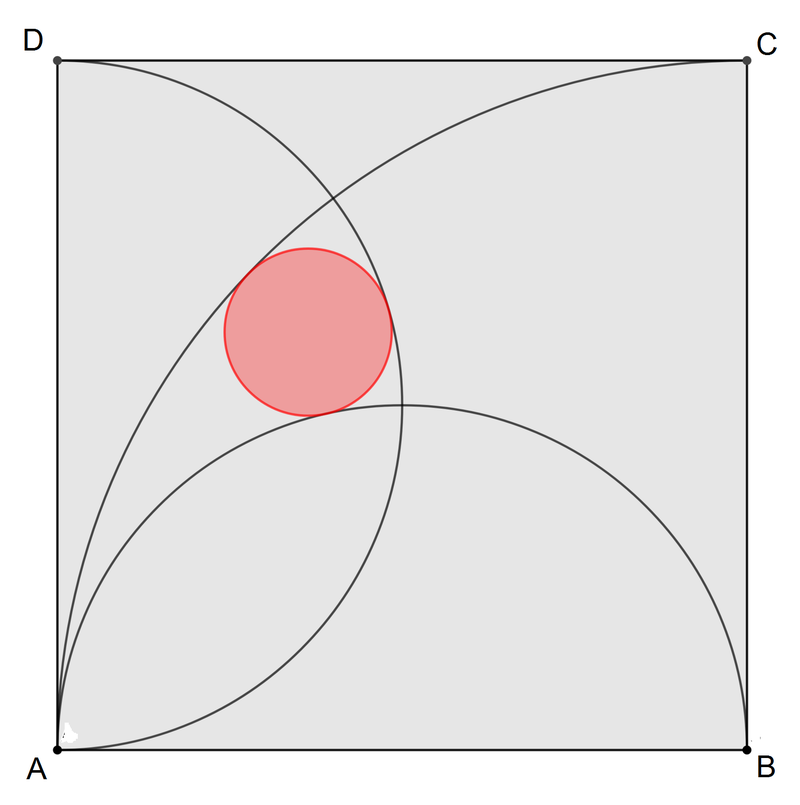A Red Circle

is the unit square. A quadrant is centered at . and are semicircle diameters. The red circle touches all three curves. If the radius of the red circle is expressed as , where and are positive coprime integers, submit .
The answer is 37.
This section requires Javascript.
You are seeing this because something didn't load right. We suggest you, (a) try
refreshing the page, (b) enabling javascript if it is disabled on your browser and,
finally, (c)
loading the
non-javascript version of this page
. We're sorry about the hassle.
Let A be the origin ( 0 , 0 ) of the x y -plane, r be the radius and O ( x , y ) be the center of the red circle, and M ( 0 , 2 1 ) and N ( 2 1 , 0 ) be the midpoints of D A and A B respectively. By Pythagorean theorem :
⎩ ⎪ ⎪ ⎪ ⎪ ⎪ ⎨ ⎪ ⎪ ⎪ ⎪ ⎪ ⎧ O M 2 : O N 2 : O B 2 : x 2 + ( y − 2 1 ) 2 = ( 2 1 − r ) 2 ( x − 2 1 ) 2 + y 2 = ( 2 1 + r ) 2 ( x − 1 ) 2 + y 2 = ( 1 − r ) 2 . . . ( 1 ) . . . ( 2 ) . . . ( 3 )
( 2 ) − ( 3 ) : x − 4 3 ⟹ x = 3 r − 4 3 = 3 r
( 1 ) − ( 2 ) : x − 4 1 − y + 4 1 x − y ⟹ y = − 2 r = − 2 r = x + 2 r = 5 r
( 3 ) : ( 3 r − 1 ) 2 + 2 5 r 2 9 r 2 − 6 r + 1 + 2 5 r 2 3 3 r 2 − 4 r ⟹ r = ( 1 − r ) 2 = r 2 − 2 r + 1 = 0 = 3 3 4 Since r > 0
Therefore p + q = 4 + 3 3 = 3 7 .